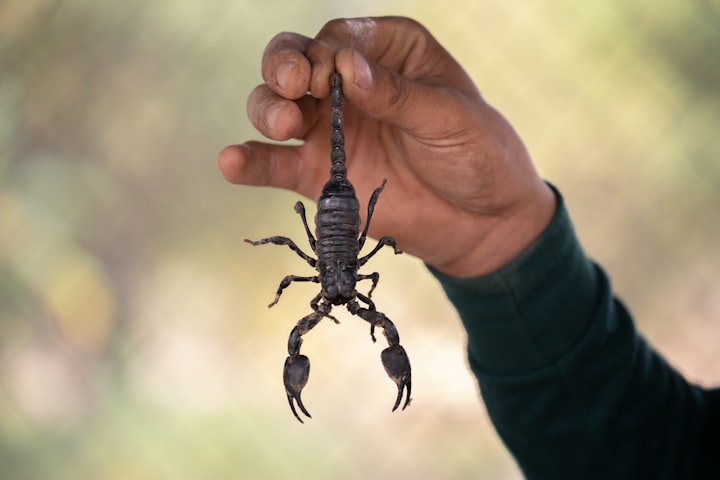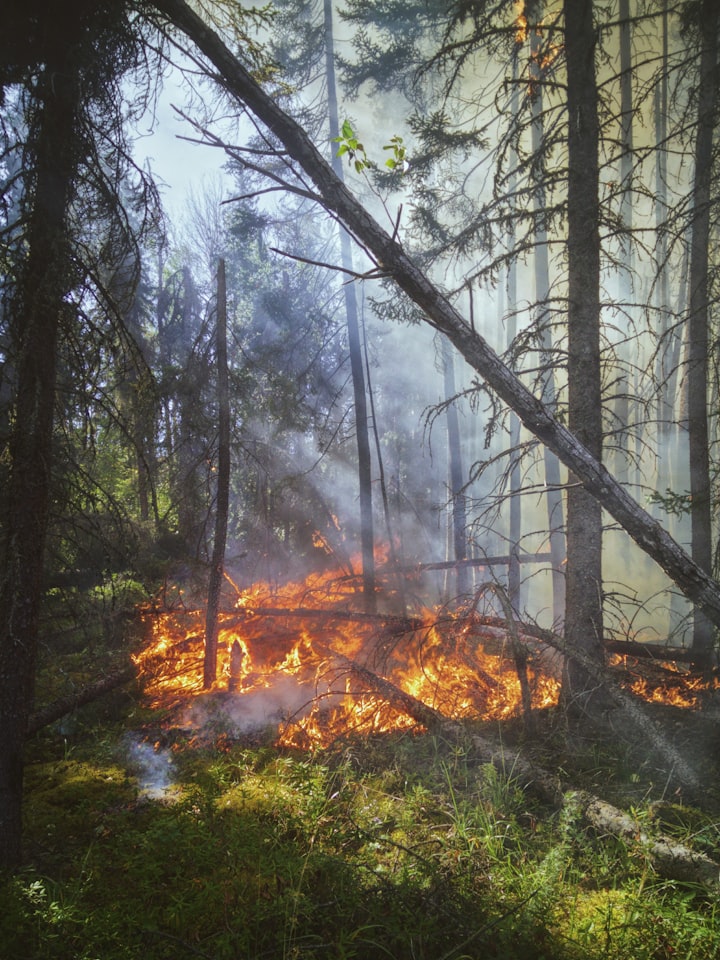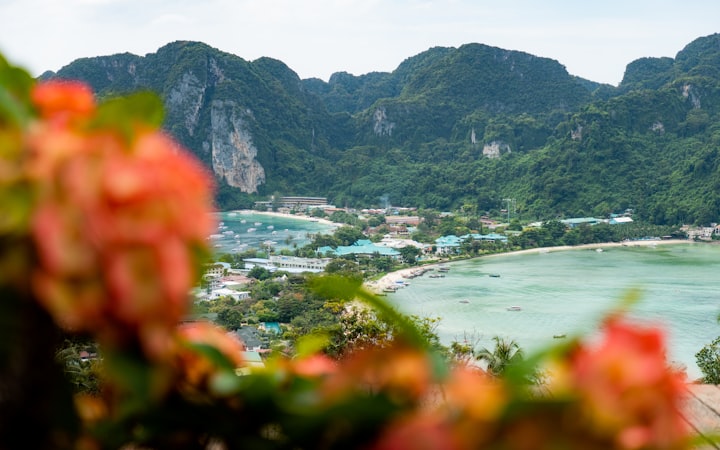Venomous Vipers of the Arachnid World: Unveiling the 10 Deadliest Scorpions
More than 1.5 million people experience scorpion stings (envenomings) every year more than 3,500 die.

By: Marlene Affeld
Creepy, crawly, and just plain scary, scorpions are carnivorous, nocturnal anthropoids that hide in warm, dark places. Scorpions reside in rotting logs, under leaves, grass clippings, and stones. Indoors, scorpions hide in garages, basements, attics, crawl spaces, or any other indoor habitat that is dark and undisturbed. They hide in cracks and crevices during daylight hours and come out at night to feast on cockroaches, spiders, silverfish, carpet lava beetles, bed bugs, fleas, and other small insects.
Eight-legged arachnids with segmented tails ending in a venomous stinger and a painful pair of lobster-like pedipalps, or large anterior claws called pincers. Scorpions vary in size, speed, the potency of their venom, and the pain inflicted by their stings.

Scorpions adapt to a wide variety of environments. You can find them on all continents except Antarctica. While some scorpions seek out cool, damp environments, most are nocturnal desert dwellers able to survive extreme heat with limited water. Most scorpion species seek arid habitats, including virtually all deserts in the Eastern and Western Hemispheres, excluding Australia.
There are more than 2000 known species of scorpion globally. Out of this considerable total, less than 20 scorpion species are lethal. However, all species of scorpion are dangerous, some much more so than others. Scorpions turn their long tail upward when threatened. Keep your distance!
Reactions to scorpion stings vary from person to person. Scorpion bites inject staph germs under the skin; 50 percent of bites develop a nasty infection. The flesh can become necrotic in some people, while others may experience a severe allergic reaction with sensory, neuromuscular, and respiratory effects.
Far more painful than a bee sting with a nasty mark that persists, scorpion stings typically require a trip to the emergency room. Depending on the scorpion species and the amount of venom injected, mild symptoms can progress to severe complications over a few hours. A sting injects a massive release of neurotransmitters, which paralyzes the victim or prey. Scorpion venom neurotoxins usually cause profuse sweating, severe muscle weakness, paralysis, respiratory depression, necrosis, nausea, vomiting, hypersalivation, restlessness, and, in more severe cases, arrhythmia, coma, and heart failure, which may lead to death.

A potentially lethal mixture of neurotoxins, enzyme inhibitors, and other compounds, venom released by any scorpion is highly poisonous. It can be deadly amongst vulnerable populations such as small children, older folks, and persons with pre-existing health conditions.
Envenomation from dangerous species often requires antivenin treatment to ease breathing difficulties, paralysis, and convulsions and to prevent death. The severity of a scorpion sting depends on several factors, including the amount of toxic venom injected, the health and age of the victim, and how quickly the victim receives medical attention. The majority of fatalities are related to cardiogenic shock and pulmonary edema, especially in young children.
Less than a decade ago, a sting from one of the more venomous species of scorpions was likely a death sentence. However, newly developed antivenom and enhanced medical treatments have significantly reduced the mortality rate from scorpion stings.
The first scorpion-like creatures lived in the sea, growing up to eight feet long at maturity. Scorpions are one of the oldest animals on Earth, dating back to the Silurian era 430 million years ago, long before the first dinosaurs. However, the first true scorpions to appear on land were up to three feet long. Today, they're much smaller. Among types of scorpions, the smaller species prove the most deadly - larger scorpions tend to compensate and intimidate potential predators with their size and formidable appearance.
10. Deathstalker Scorpion
Native to the desert scrubland of the Middle East and North Africa, the Deathstalker scorpion (Leiurus quinquestriatus), also known as the Naqab desert scorpion, the Omdurman scorpion, or the Palestine yellow scorpion, is a member of the family Buthidae. Out of the thousands of scorpion species, the deathstalker inflicts the most painful and toxic sting and is considered the world's most dangerous and deadly arachnid

The deathstalker scorpion typically measures between 2 and 3.5 inches at maturity. The deathstalker blends with its environment, exhibiting a concealing camouflage coloration of yellow to brownish green. A sting from this scorpion is likely to cause severe medical complications and untimely death.
Deathstalker Scorpion venom, used for a diverse array of medical applications, including the treatment of malaria and for identifying tumors, priced at 39 million dollars a gallon, sets the record as the most expensive liquid in the world.
9. Common Yellow Scorpion
Found in parts of Europe and North Africa, the Common Yellow Scorpion (Buthus occitanus), like the Deathstalker Scorpion, belongs to the family Buthidae. Scorpions in this family tend to be the most toxic and deadly, with venom fractions, including compounds such as acetylcholinesterase, hyaluronidase, serotonin, phospholipase, and other specific neurotoxins.
Like crickets, some scorpion species, like the common yellow scorpion, "sing" by rubbing their legs together. However, unlike crickets, the song is considered a warning call instead of a call to attract a mate. If you hear a scorpion's "song," be aware.

8. Fat-Tailed Scorpion
The fat-tailed scorpion (Androctonus australis), also known as the Spitting Blacktail Black Scorpion, native to North Africa and the deserts of the Middle East, is a small 3 to 4-inch scorpion that packs a powerful wallop when it strikes. Their venom is a deadly mix of neurotoxins and cytotoxins. If this scorpion bites you, seek medical attention immediately.

7. Israeli Gold Scorpion
This aggressive Middle Eastern species injects a potent venom that is extremely painful but non-lethal. A small 1-inch scorpion burrowing scorpion, the Israeli Gold Scorpion (Scorpio maurus palmatus), also known as Zerachia, the spitting scorpion, African large-claw scorpion, or Egyptian scorpion.
6. Brazilian Yellow Scorpion
The Brazilian Yellow Scorpion, scientifically known as Tityus serrulatus, is a small 2.5 to 3-inch, shadow-seeking scorpion with a dusty yellow-brown coloration. The color of this scorpion helps hide it from predators and makes it especially difficult to avoid. The Brazilian Yellow Scorpion causes more pain and death in Brazil than all other venomous species found in tropical countries, including lizards, spiders, and snakes.

5. Indian Red Scorpion
Found in India, Nepal, Pakistan, and Sri Lanka, the Indian Red Scorpion (Hottentotta tamulus) is a small, slinky, reddish-orange 2 to 3-inch desert creature that inflicts a highly nasty sting. If not fatal, the bite becomes weepy, watery, horribly painful, and slow to heal.
Several scorpions, including the Indian Red Scorpion, exhibit interesting mating rituals. The male grasps the female's pincers with his and leads her in a courtship dance that may last for several hours. The exact nature of this courtship dance varies from one species to the next. In general, the male deposits a sperm packet and maneuvers the female over it. The sperm packet, absorbed into the female's genital opening located near the front on the underside of her abdomen, remains in place for later use to fertilize her eggs. After mating, unless he is quick and able to escape, the male is often eaten by the female.
Females give birth to live young and carry up to 40 on their backs for up to three weeks- protecting the young until they have their first molt when they shed their tough exoskeleton to grow larger.
4. Arizona Bark Scorpion
Less than 2 inches long, the little yellowish-brown Arizona Bark Scorpion (Centruroides sculpturatus) holds responsibility for the majority of scorpion bites in the United States. It is the most deadly scorpion in North America. If treated promptly, stings from the Arizona Bark Scorpion are generally not fatal. However, they are unpleasant: painful, with blistered skin and intense swelling around the sting site.
Found throughout Arizona, the Bark scorpion also inhabits desert areas of New Mexico, southern Utah, southern Nevada, and the Mexican states of Sonora and Chihuahua. The Arizona Bark Scorpion displays a brown to blackish coloration, effectively blending in with its desert surroundings.

The Bark scorpion is a nocturnal creature, preying on spiders, roaches, crickets, beetles, and other small insects. They are also cannibals, preying on other scorpions.

3. Arizona Stripe-Tailed Scorpion
Arizona Stripe-Tailed Scorpion (Centruroides exilicauda) is a dangerous, nocturnal, 2-inch-sized brownish-red scorpion with a painful venomous bite. Known as the striped bark scorpion due to the dark stripes on its tan carapace, it ranges throughout the Southwestern United States and northern Mexico. A medium-sized scorpion, the stripe-tail scorpion lives in trees, shrubs, leaf litter, grasses, wood piles, desert floors, rocky areas, and, occasionally, our homes.
2. Brazilian scorpion
Found in South America, particularly in Brazil, the Brazilian Brown Scorpion (Tityus bahiensi) can cause severe symptoms when stung. The Brazilian scorpion tends to hide in dark, sheltered places like woodpiles, rocks, and jungle debris in tropical rainforest areas of Brazil, Argentina, and Uruguay. Practice caution. A bite from this scorpion means a trip to the emergency room. The bite is excruciating and potentially lethal without medical intervention.
1. Arabian Blacktail Scorpion
The largest of the deadliest of scorpions, the Blacktail Scorpion (Androctonus crassicauda), native to The Arabian Peninsula, including Iraq, Iran, Turkey, and Israel, reaches a length of up to 4.5 inches and presents a black body. Extremely aggressive, the Arabian blacktail scorpion is considered one of the most dangerous scorpions in the world—this scorpion's agonizing sting is described as branding with a red-hot iron. The wound is slow to heal, even with immediate medical treatment.
References:
Arizona Bark Scorpion (U.S. National Park Service).
Scorpion Venom: Detriments and Benefits - PMC
Poisonous scorpion - an overview | ScienceDirect Topics.
About the Creator
Marlene Affeld
“A passionate writer for more than 30 years, Marlene Affeld’s passion for the environment inspires her to write informative articles to assist others in living a green lifestyle.”






Comments
There are no comments for this story
Be the first to respond and start the conversation.